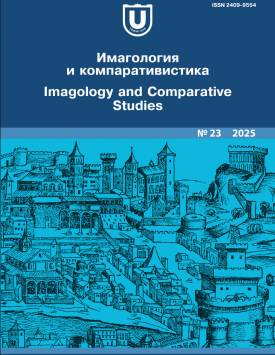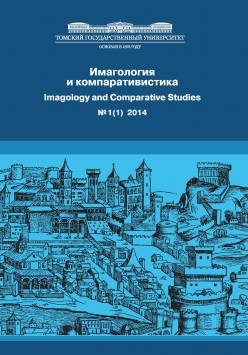A comparative-typological analysis of female characters in Srpouhi Dussap’s Mayda
The study focuses on a typological analysis of female characters in terms of their psychological features and self-identification strategies in the novel Mayda (1883) by Srpouhi Dussap, a Western Armenian author of the second half of the 19th century. Drawing on Lacan’s concept of feminine subjectivity, the author analyzes the complex characters of Mayda and other female characters, namely Sira, Herika, and Houlianee to reveal how a nonbinary female archetype demonstrates the blending of irrational and rational qualities of both the mother and the mistress. This approach highlights female subjectivity and its multiplicity through the Other. The author concludes that the tragedy of female self in Mayda lies within the patriarchal discourse, necessitating women to adopt different roles and masked appearances. This polyphony marks the female prose of the late 19th century through a gender prism. The author declares no conflicts of interests.
Keywords
Srpouhi Dussap,
Mayda,
typology,
tragic experience,
subject,
subjectivity,
demonic woman,
angel womanAuthors
| Hambardzumyan Naira V. | Manook Abeghyan Institute of Literature of the National Academy of Sciences of the Republic of Armenia | nairahambardzumyan@yahoo.com |
Всего: 1
References
Dussap, S. (1883) Mayda. Constantinople: Zardarian. (In Armenian).
Sharuryan, A. (1963) Srbuhi Tyusab: Life and Work. Yerevan: YSU. (In Armenian).
Babayan, A. (1941) Srpouhi Dussap. Bulletin of the Armenian Branch of the Academy of Sciences of the USSR. 3-4 (8-9). pp. 23-33. (In Armenian).
Muradyan, L. (2004) The First Armenian Woman-Novelist. Literary Journal. 1. pp. 22-40. (In Armenian).
Dussap, S. (1884) Siranoush. Constantinople: Nshan K. Perperean. (In Armenian).
Dussap, S. (1887) Araksia Gam Varjuhin [Araksia, or The Governess]. Constantinople: Arev. (In Armenian).
Hambardzumyan, N. (2023) The Ideology of Women’s Emancipation as Ontogenesis of the Subject Formation. Vestnik Sankt-Peterburgskogo Universiteta: Istoria. 4(68). pp. 962-973. doi: 10.21638/spbu02.2023.409.
Landow, G.P. (1992) Other Convergences: Intertextuality, Multivocality, and De-centeredness: The Johns Hopkins University Press.
Lacan, J. (1998) On Feminine Sexuality the Limits of Love and Knowledge: The Seminar of Jacques Lacan. BookXX Encore. Translated by B. Fink. New York: Norton. doi: 10.4324/9780203970484.
Koller, A., Oepen, S. & Sun, W. (2019) Graph-based meaning representations: Design and processing. Proceedings of the 5 7th Annual Meeting of the Association for Computational Linguistics: Tutorial Abstracts. Florence, Italy, July 28 - August 2. pp. 6-11.
Knoblock, Vu.B. & Pujara, J. (2019) Learning Semantic Models of Data Sources: Using probabilistic graphical models. WWW’19 (May 13-17). USA, San Francisco. pp. 1944-1953.
Jung, C.G. (1969) The Archetypes and the Collective Unconscious. 2nd ed. Translated by F.C. Hull. New York: Bollingen Series XX. doi: 10.1515/9781400850969.
Hambardzumyan, N. & Parsadanyan, S. (2022) Philosophical-Anthropological Concepts of Subject and Subjectivity as a Genesis of Women’s Emancipation. WISDOM. 24(4). pp. 56-63. doi: 10.24234/wisdom.v24i4.953.
Solomon, R. (2005) Subjectivity. In: Honderich, T. (ed.) Oxford Companion to Philosophy. Oxford University Press. doi: 10.1093/acref/9780199264797. 001.0001.
Beauvoir, S. de (1956) The Second Sex. Translated by H.M. Parshley. London: Jonatan Cape: Thirty Bedford Square London. doi: 10.4324/9781315614168.
Irigaray, L. (1985) Speculum of the Other Woman. Translated by G. Gill. New York: Cornell University Press. doi: 10.2307/2088963.
Lacan, J. (2004) Seminars: Four basic concepts of psychoanalysis. Book 11. Moscow: Gnozis. pp. 199-278. (In Russian). doi: 10.15407/psychoanal2016.03.097.
Cixous, H., Showalter, E. & Messbarger, R. (1997) Double-Voiced Discourse: The feminist encyclopedia of Italian literature. Westport, Connecticut, London: Greenwood Press.
Messbarger, R. (1994) Double-Voiced Discourse’: A Study of an Eighteenth-Century Italian Woman’s Magazine. Italian Culture. 12(1). pp. 125-137.
Hambardzumyan, N. (2024) A Neglected Fact of Armenian History and Culture in Constantinople in the Second Half of the 19th Century: Elpis Kesaratsian and the Magazine “Guitar” (1861-1863). Women’s Writing. 31(1). pp. 1-26. doi: 10.1080/09699082.2023.2299142.
Hambardzumyan, N. & Parsadanyan, S. (2023) The Sociology of Female Characters in the Novels of Western Armenian Female Authors in the Late 19th Century. Vestnik of Saint Petersburg University. Asian and African Studies. 15(4). pp. 687-701. doi: 10.21638/spbu13.2023.405.

